Postpartum Depression: Myths vs. Facts Debunked
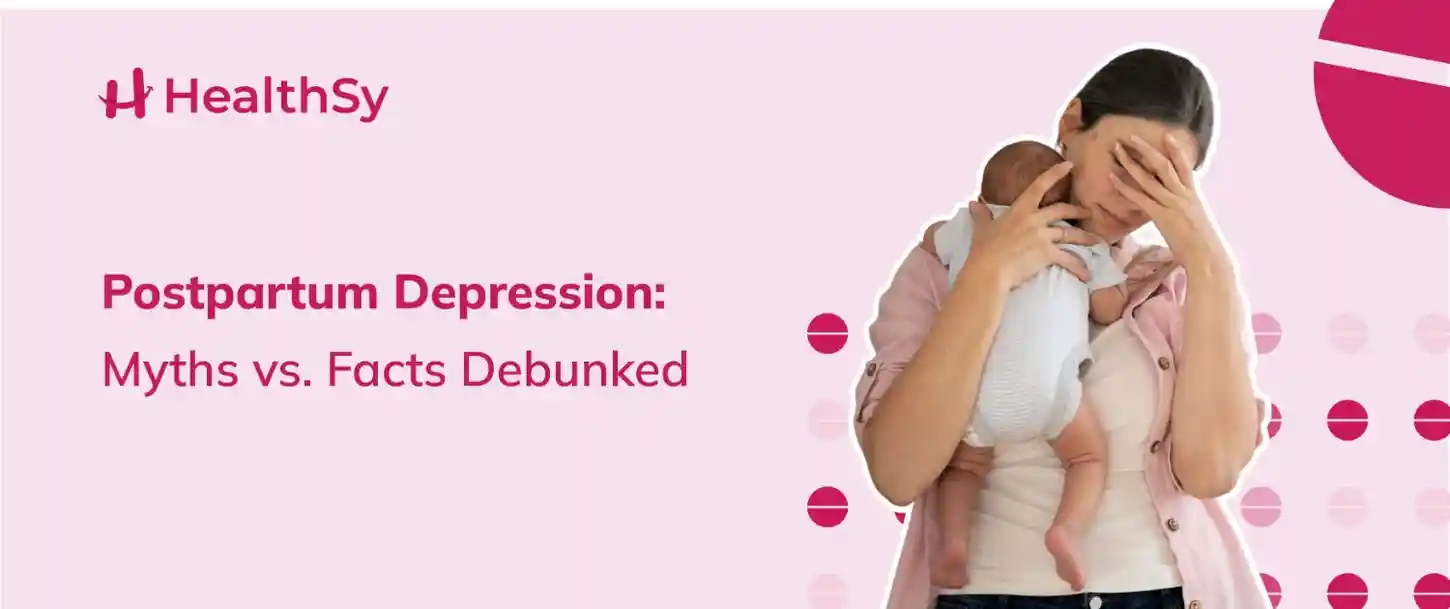
Motherhood is always seen and portrayed as a very happy and joyous experience that is filled with excitement and love. However, for a few mothers, the reality could be quite different. Postpartum depression is a serious health issue that affects a lot of women worldwide. Unfortunately, it does have a few misconceptions that often stop women from getting it treated. Now, in this blog let us debunk a few myths and misconceptions about postpartum to build awareness and understanding on the illness.
Myth 1: Postpartum Depression is the Same as Baby Blues
Fact: While both postpartum depression and baby blues occur after childbirth, they are not the same. Baby blues usually last for a few days to two weeks and involve mild mood swings, irritability, and anxiety. Postpartum depression, on the other hand, is more severe, persistent, and can last for months if untreated. Symptoms of postpartum depression include intense sadness, extreme fatigue, loss of interest in daily activities, and even thoughts of self-harm or harming the baby.
Myth 2: Postpartum Depression Happens Immediately After Birth
Fact: Many believe postpartum depression occurs right after childbirth, but symptoms can develop anytime within the first year postpartum. Some mothers may start experiencing postpartum depression weeks or even months after delivery. This delayed onset can make it harder to recognize, emphasizing the need for continuous mental health check-ups.
Myth 3: Only Women Experience Postpartum Depression
Fact: While postpartum depression is more commonly associated with new mothers, fathers can also experience it. Paternal postpartum depression affects around 10% of new fathers, often due to hormonal changes, lack of sleep, financial stress, or the pressure of new responsibilities. It’s crucial to recognize that postpartum depression is not limited to women and to ensure support is available for both parents.
Myth 4: Breastfeeding Prevents Postpartum Depression
Fact: While breastfeeding has numerous benefits for both mother and baby, it is not a guaranteed way to prevent postpartum depression. Some mothers find breastfeeding challenging, which can lead to increased stress and anxiety. Additionally, hormonal fluctuations after birth play a significant role in postpartum depression, making it possible for breastfeeding mothers to still experience it. The key is to seek support and not feel guilty if breastfeeding is difficult.
Myth 5: Postpartum Depression Means You Don’t Love Your Baby
Fact: One of the most harmful myths about postpartum depression is that it indicates a lack of love for the baby. Postpartum depression is a mental health condition that affects mood, energy levels, and emotional responses. Many mothers with postpartum depression deeply love their babies but struggle to connect emotionally due to overwhelming sadness and fatigue. Seeking treatment can help mothers rebuild that emotional connection.
Conclusion
Postpartum depression is indeed a serious condition that needs understanding, awareness, and treatment. Just like other health conditions, postpartum depression also has a few myths that have been believed by people globally. So, debunking these myths would have been helpful for all the new mothers out there to hope up and get the support they need. If you are someone you are facing postpartum depression, never hesitate to seek professional help. Remember, this is treatable, and recovery is indeed easy with the right care and support. So, try to spread awareness as much as possible and create a better understanding environment.
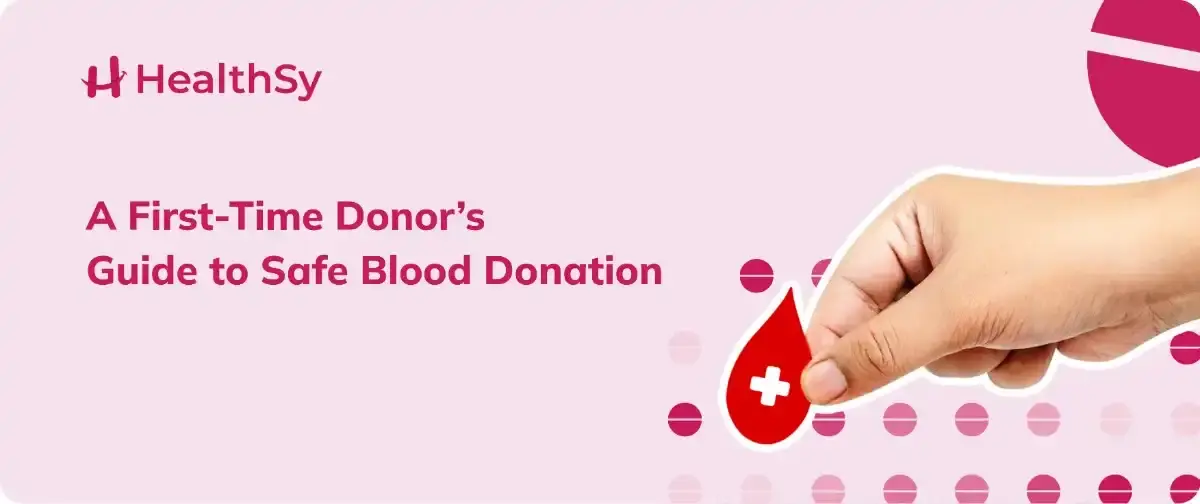
Blood donation is one of the most selfless and significant ways to save lives. If you choose to donate blood for the first time, you may have many questions and concerns regarding the process and your health. In that case, do not worry; this guide has got you covered. Here in this guide, we have listed all the required details regarding blood donation preparations, recovery, etc. Keep reading to know more.
Why is Blood Donation Essential?
Every two seconds, someone globally requires blood. Blood donation is a significant requirement since the need for blood is enormous in cases of surgeries, chronic conditions, and emergencies that require immediate blood, like road accidents. Donating blood one time could save up to three lives. This proves that blood donation directly contributes to the survival of people in your society.
Blood Donation Eligibility
Before you commit to the blood donation process, you must meet your eligibility criteria. Also, the criteria might vary based on regions, but the standard requirements include:
- Good health
- Age requirement between 17-65 years old (In some places, they allow younger and older donors on certain conditions)
- Weight at least 50 kgs (110 lbs)
- No recent tattoos or piercings (within the last 6 months)
Make sure to check
with your local blood donation center for eligibility and various other
guidelines.
Tips to Prepare for Blood Donation
Preparation is essential to ensure a smooth blood donation process. So, consider the following before donating blood:
- Hydrate well
- Eat healthy meals
- Get a good night's sleep
- Bring ID and donor data
Blood Donation Process
Step 1: Registration
Initially, you will be asked to register by providing the required details, such as filling out the blood donor questionnaire, so that you can access your health and eligibility.
Step 2: Health Screening
Secondly, a brief health checkup will be conducted to monitor your blood pressure, hemoglobin levels, and temperature.
Step 3: Donation
Next is your blood donation process, which will take 8-10 minutes. Approximately 1 pint of blood will be collected from your body during this process, which will take about an hour from registration to blood donation.
Step 4: Post-donation care
After the blood donation, you'll be given refreshments to help you stay hydrated and regain your fluids.
How often can Blood Donation be done?
You can donate blood every 56 days (Whole Blood), every 7 days, up to 24 times a year(platelets), every 28 days (plasma)
Benefits of Blood Donation:
Saving Lives: Every blood donation made can save up to 3 lives, offering more critical support to patients who are undergoing surgeries, cancer treatments, or suffering from any traumatic injuries.
Health Screening: Blood donation involves a complete health checkup, which can help detect health risks like anaemia and high blood pressure.
Heart Health: Blood donations will reduce the iron content stored in the body, potentially decreasing the risk of heart diseases.
Mental Well-being: Blood donation will improve emotional well-being by helping reduce stress and mental pressures.
Tips for a Better Blood Donation:
- Stay more hydrated
- Do avoid heavy exercising
- Keep your health in check
Final Thoughts
Embarking on your first blood donation journey is a noble step towards impacting the lives of others. By knowing more about the process and the benefits of donating blood in detail, you will ensure a good and safe blood donation journey. Remember, your blood donation journey not only helps those who are in need but also promotes your health and well-being.
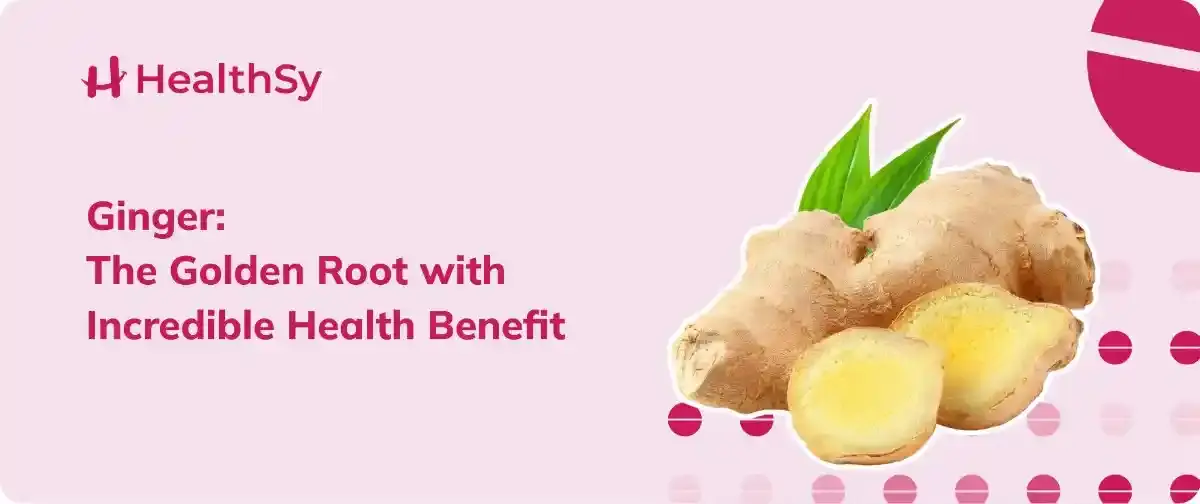
Ginger, also known as golden root, has been cherished for years for its medicinal value and health benefits. People worldwide have spoken about its remarkable health properties for centuries. Whether added to dishes for a zesty kick or brewed into a comforting tea, ginger offers a wide range of benefits that extend far beyond the kitchen.
Let’s explore why this humble spice is considered a powerhouse of wellness and how incorporating ginger into your daily routine can enhance your health naturally.
Overview of Ginger
Ginger, scientifically called Zingiber officinale, is a flowering plant native to Southeast Asia. The standard part of ginger we use is the rhizome, or the underground stem, which has an aromatic and spicy flavor. With all the bioactive compounds like gingerol, ginger possesses strong anti-inflammatory and antioxidant properties.
Ginger tea is one of the best ways to include ginger in your daily routine. Preparing is easy and the best way to keep your health.
Benefits of Ginger Tea:
- Aids digestion
- Relieves nausea
- Boosts immunity
- Helps reduce inflammation
Medicinal Uses of the Ginger Plant
The medicinal uses of the ginger plant are vast and documented in traditional medicine systems such as Chinese medicine, Ayurveda, and Unani.
- Anti-nausea: Ginger is commonly used to cure nausea and vomiting during pregnancy, surgery, or motion sickness.
- Pain Reliever: It is a very commonly used anti-inflammatory agent and helps relieve pain
- Supports Heart Health: Ginger helps lower blood pressure and prevents blood clotting.
- Improves Respiratory Health: Ginger's warming properties help cure respiratory conditions like bronchitis and asthma.
- Antimicrobial Properties: Ginger has many compounds that protect your body from viruses and bacteria.
Whether consumed raw, powdered, juiced, or as a supplement,
the ginger plant is a natural remedy worth incorporating into your wellness
regimen.
Tips to include more ginger in your diet:
The following are a few of the best ways to add ginger to your diet:
- Add it to your tea and have it daily
- Add ginger to your baking dishes in powdered form
- Add fresh ginger to soups, smoothies, and any other foods
- You can also try ginger supplements after asking your healthcare provider
Conclusion
Ginger is a golden root that lives up to its reputation and credibility. Its health benefits are numerous and truly commendable. From getting rid of nausea to fighting inflammation and improving immunity, ginger plays a simple yet powerful role in your health. Whether drinking a warm cup of ginger tea or including it in your food, this magical root provides excellent solutions to various health issues.
Just embrace the benefits of ginger, and your body will thank you.
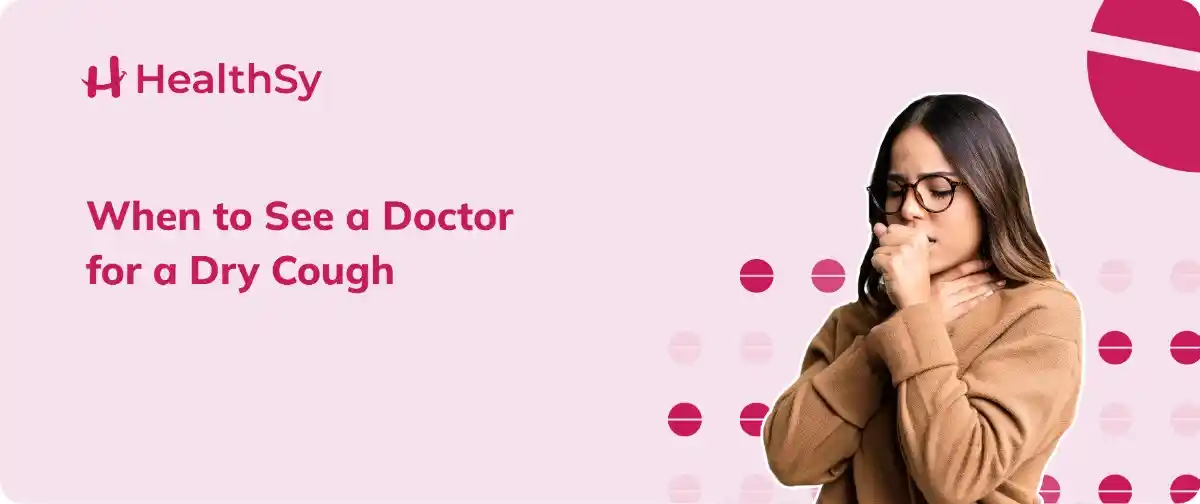
Coughs generally have two types: productive coughs, which produce mucus and phlegm, and unproductive coughs, known as dry coughs.
A dry cough is a continuous cough that does not produce phlegm or mucus. It is commonly caused by discomfort in the airways. This dry cough could also be a cold, flu, allergies, or asthma symptom. Sometimes, a dry cough will be a symptom of severe conditions. However, a prolonged dry cough can affect your day-to-day life, particularly if it disturbs your sleep.
Now, keep reading to know more about dry cough in detail.
Common Causes of Dry Cough
A dry cough can be caused due to various reasons. A few include the following.
- Asthma or bronchitis
- GERD (Acid Reflux)
- Environmental irritants like pollution and Smoke
- Viral infections like the flu or a cold
- Allergic reactions due to pollen or dust
Home Remedies for Dry Cough
There are multiple home remedies available to reduce a dry cough. The following are a few that you can try to keep your cough under control:
- Honey and Warm Water: Helps soothe throat irritation
- Steam Inhalation: Helps ease inflammation and congestion
- Turmeric Milk: Acts as the best anti-inflammatory agent
- Ginger Tea: Reduces inflammation and fights infections
- Saltwater Gargle: Helps reduce throat discomfort
While these home remedies are helpful, you must consult your doctor and get expert
advice if the symptoms persist for a long time. Seeing a doctor will help rule
out the issue faster.
Choosing the Right Dry Cough Syrup
If you prefer a dry cough syrup, ensure it suits and works with your symptoms. Most dry cough syrups contain diphenhydramine or dextromethorphan, decreasing the cough reflex. However, do not self-medicate, particularly if you are unsure about your symptoms. Always consult a doctor before choosing a dry cough syrup, particularly for children, older people, or people with pre-existing conditions.
When Should You Consult a Doctor for a Dry Cough?
Here are a few signs that indicate it’s time to stop self-medicating and consult a doctor immediately:
- If the cough lasts more than 3 weeks
- If it gets worse than before
- If you feel chest pain, wheezing, or discomfort breathing
- If you notice fatigue and weight loss
- If you cough up blood
Knowing when to consult a doctor
for a dry cough is crucial to avoid complications and ensure an easy diagnosis.
Whom to Consult for Dry Cough?
If you have a dry cough, you can consult a general physician, who will refer you to a pulmonologist if you need to get your lungs tested or if there are any chances of infections causing your dry cough.
Consulting the right specialist will help you treat a dry cough and identify the root cause of the cough.
Final Takeaway
A dry cough might seem less harmful at the early stages, but it is crucial to see a doctor when you feel like it increases or worsens over time. Your doctor will prescribe antibiotics or suggest the right treatments to get you treated and avoid any complications due to dry cough. Never ignore the symptoms, and use the best medical facilities available. Do not hesitate to consult your doctors when necessary. Early action is one of the best treatments to keep your body healthy and illness-free.

During the summer season, heat-related illnesses are becoming increasingly common. In fact, many people experience heat cramps, dizziness, fainting, blurred vision, slurred speech, and confusion. If these symptoms are not addressed promptly, they can lead to Heat Stroke. Last year 2024, between March 1 and June 18, 110 people in India died from heat strokes, according to data from the Health Ministry. This article provides essential information on recognizing the symptoms of heat stroke, its causes, and the appropriate treatment to prevent fatalities.
What is Heat Stroke?
Heat stroke, or sunstroke, occurs when a person's body temperature rises quickly and cannot cool down. It is a serious and potentially life-threatening condition that can damage the brain, heart, kidneys, and muscles and can be fatal without prompt treatment. Generally, heat strokes are classified into two main types:
1. Exertional heat stroke:
Intense physical activity in hot or humid conditions causes exertional heat stroke. It generally affects athletes, military personnel, and outdoor workers who engage in prolonged activities without adequate hydration or cooling breaks.
2. Non-exertional (classic) heat stroke:
This type of stroke, also known as classic stroke, occurs during exposure to extended periods of hot environmental conditions, such as heat waves or long durations of high temperatures and humidity. Older adults, infants, and individuals with chronic medical conditions are vulnerable to this stroke.
Symptoms of Heat Stroke
The symptoms can vary based on the severity of the condition, but common symptoms include the following:
- 104 degrees Fahrenheit or higher body temperature
- Behaviour changes such as agitation or aggression.
- Hot, dry skin occurs in cases of classic heat stroke.
- Flushed, sweaty skin occurs in classic heat stroke.
- Increased heart rate
- Headache
- Nausea and vomiting
- Seizures
- Muscle cramps or weakness
Causes of Heat Stroke
Several factors contribute to heat stroke, which include:
- Spending long hours in a hot and humid environment
- Dehydration results from inadequate fluid intake or excessive fluid loss
- Engaging in strenuous physical activity, especially in hot conditions
- Wearing too many clothes or tight-fitting garments can trap heat
- Chronic illnesses such as heart disease, respiratory conditions, obesity, and mental health disorders can increase vulnerability to heat stroke
Risk Factors of Heat Stroke
While anyone can suffer from heat stroke, certain factors can increase the risk:
- Age: Infants and people over 65 are less efficient at regulating body temperature.
- Chronic illnesses: heart disease, lung disease, kidney disease, and obesity heighten susceptibility.
- Medications: Drugs that affect hydration and heat regulation raise the risk.
- Sudden exposure: Moving from a cooler climate to a much hotter one can shock the body.
- Lack of air conditioning: Living without cooling systems during heat waves increases danger.
Treatments of Heat Stroke
Heat stroke is a life-threatening condition that demands immediate medical attention to avoid severe complications or death. Treatment usually includes the following steps:
- Cooled IV fluids
- A cooling blanket
- An ice bath
- Medication to prevent seizures
- Supplemental oxygen
- A cold-water lavage
Conclusion
As temperatures continue to rise, preventing yourself from heat stroke is more important than ever. To protect yourself from heat stroke, stay hydrated, wear lightweight and breathable clothing, avoid outdoor activities during peak heat hours, and take frequent breaks in the shade. If you or someone you know shows signs of heat exhaustion or heat stroke, do not delay. Look for immediate care and consult a healthcare professional for proper treatment.
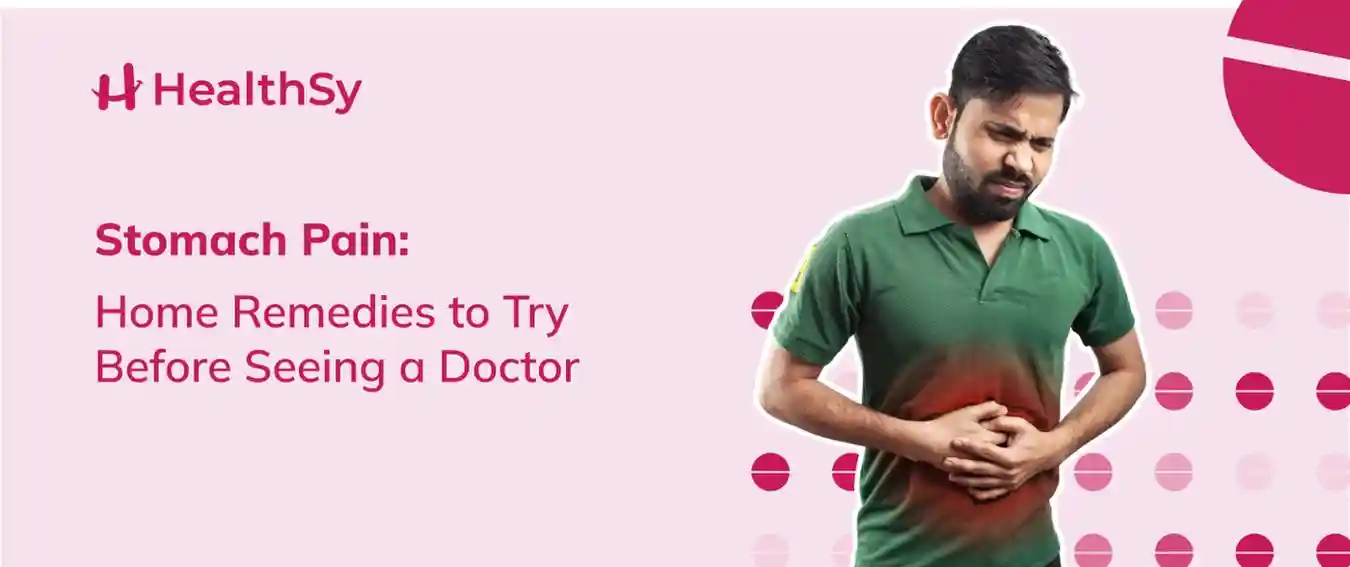
We have all felt a cramp that
comes out of nowhere, a twist in the gut, a belly bloating after full meals,
and a dull pain that never goes away. Stomach Pain! Yes. At some point almost
everybody would have experienced stomach pain in their entire lives. Whether it’s
a cramp or a dull ache in the abdominal area, the discomfort that you feel will be
heavy. It can significantly affect your routine day. At times, the stomach can be due to some digestive issues, periods, cramps, etc. It is important that you get the attention of a medical professional if your stomach pain is unbearable.
Never self-medicate. Instead, you can try a few home remedies that don’t harm you in any way. They might soothe your pain and ease your discomfort. In this article, let us learn a few efficient home remedies for stomach pain.
1: Sip on Herbal Teas or Warm Water
One of the best ways to reduce and soothe stomach aches is by drinking more water and herbal teas. Warm water can help relax the abdominal muscles and improve digestion. Herbal teas like chamomile, ginger, or peppermint are particularly beneficial. Ginger tea is known for its anti-inflammatory and anti-nausea properties. Peppermint helps relieve bloating and gas, making it ideal for general discomfort or pain in the lower abs caused by indigestion.
2. Apply a Heating Pad
Heat therapy is an age-old remedy that’s still effective today. Placing a heating pad or hot water bottle on your abdomen can relax the muscles and improve blood flow, reducing cramping or tension. This is especially useful for menstrual cramps or gas-related discomfort.
Tip: Always wrap the heating pad in a cloth to avoid burning your skin, and limit use to 15-20 minutes at a time.
3. Follow the BRAT Diet
When you're dealing with nausea, diarrhea, or general digestive upset, the BRAT diet (Bananas, Rice, Applesauce, Toast) is a gentle way to keep your stomach calm while providing some nutrition. These bland, low-fiber foods help firm up stools and don’t irritate the stomach lining, making them excellent for recovery.
Avoid spicy, fatty, or dairy-rich foods during this period, as they can worsen symptoms.
4. Try Natural Antacids
For those suffering from acid reflux or heartburn, which can cause upper abdominal discomfort, a natural antacid might help. Baking soda (sodium bicarbonate) mixed with water can temporarily neutralize stomach acid. However, this is a short-term solution and should not replace prescribed stomach pain medicine.
Another option is chewing on a few basil leaves or drinking aloe vera juice—both are known for their stomach-soothing properties.
5. Practice Gentle Movement or Yoga
If you're experiencing bloating or gas that leads to pain in lower abs, light movement can help relieve the discomfort. Yoga poses like "Child’s Pose", "Knees-to-Chest", or "Supine Twist" can help stimulate digestion and reduce trapped gas. Walking for just 10-15 minutes can also help get things moving through your digestive system.
6. Use Apple Cider Vinegar (ACV)
While ACV might not be ideal for all types of stomach pain, it can be effective for indigestion. A tablespoon of apple cider vinegar mixed in warm water, taken before meals, may help regulate stomach acid levels. Be sure to drink it through a straw to protect your teeth, and always dilute it properly.
7. Hydrate and Rest
Sometimes, the best remedy is simply giving your body time to heal. Dehydration can make stomach symptoms worse, so sipping fluids throughout the day is key. Avoid caffeine and alcohol, and get plenty of rest. A relaxed body often leads to a calm gut.
Which doctor to consult for Stomach Pain?
While there are so many home remedies for stomach pain, they may help in mild cases. At times it is crucial to consult your doctor and get your symptoms checked to know if it is a common stomach pain or something that must be concerned about. Mostly, in case of stomach pain, you can consult a general physician or a gastroenterologist.
When to see a doctor?
Consult a doctor if you experience:
- Severe or persistent pain
- High fever
- Vomiting blood or black stools
- Sudden and sharp pain in lower abs
- Inability to keep food or fluids down
- Pain that lasts more than a few days
These could be signs of a more serious condition like appendicitis, ulcers, gallstones, or gastrointestinal infections.
Final Takeaway
Home remedies basically are a great way to manage stomach pain and digestive discomforts. Just following a few simple things will help. For instance, having herbal teas, warm compress, and dietary changes will offer significant relief. Also, do not hesitate to consult your doctor if the symptoms persist or worsens. In a few cases, getting diagnosed professionally with proper medications will help fast recovery.

Post A Comment